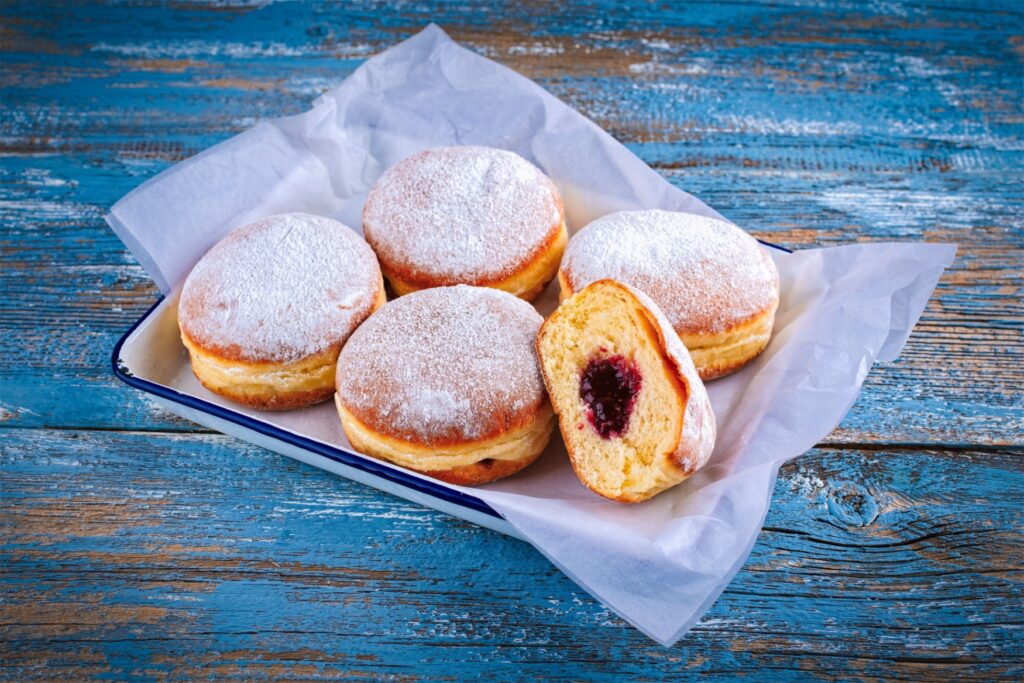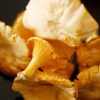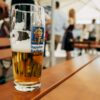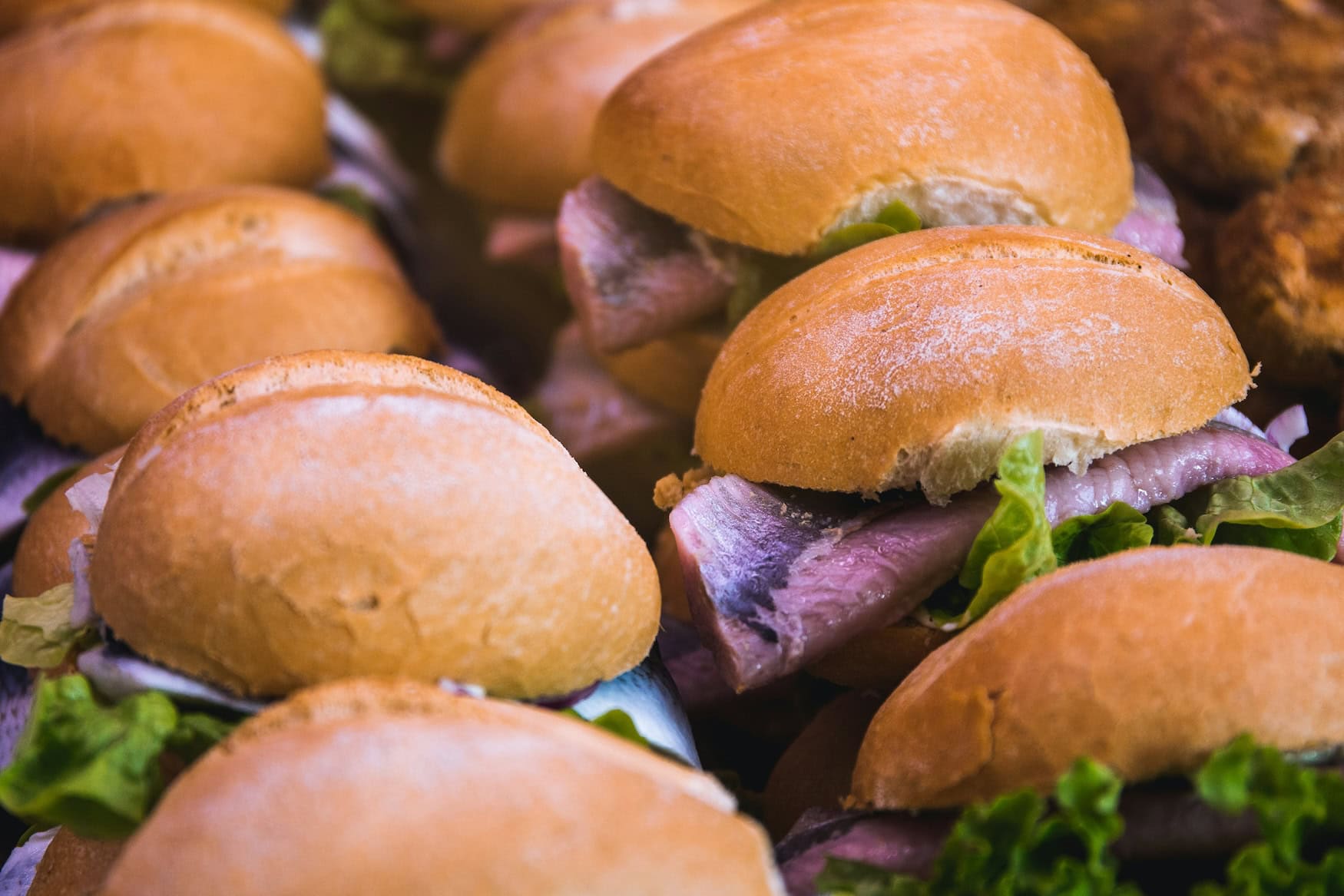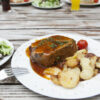If you ask people around the world, one thing is clear: Germany is famous for beer and bratwurst. But we think that’s unfair, because we can be a real paradise for foodies. And we don’t necessarily mean Michelin-starred restaurants, but also regional specialities. Here are 15 german Dishes you should definitely try – including tips on where to find them.
Northern Germany
Labskaus (Hamburg, Bremen, Schleswig-Holstein)
A hearty sailor’s dish made from corned beef, potatoes, beetroot, and fried egg, often served with “Rollmops”. Labskaus was originally eaten by sailors because the ingredients kept for a long time. Today, it is a cult dish in northern German restaurants.
Where to eat? The Old Commercial Room in Hamburg is considered one of the best places for Labskaus.
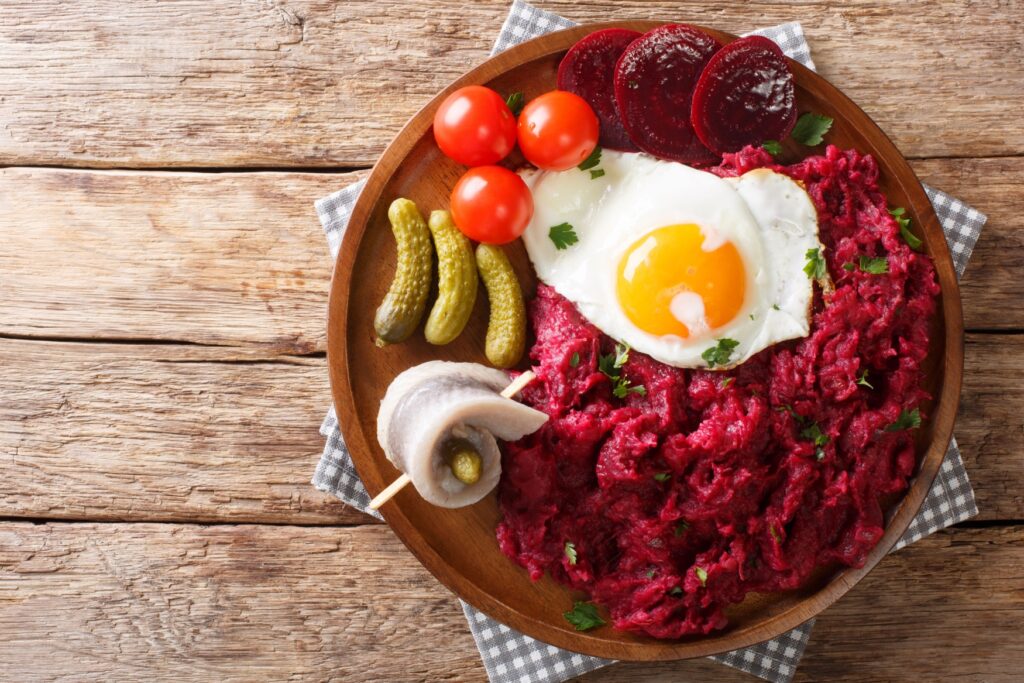
Fischbrötchen (North Sea and Baltic Sea coast)
Whether with “Matjes” (pickled herring), Bismarck herring or salmon, a fresh fish sandwich is part of the North Sea experience. It is often served with onions, salad and remoulade and is a popular snack in coastal towns.
Where to eat? The best fish rolls can be found in Büsum (“Hooks Bistro“) or on the Kiel Fjord at “Fischbar Kiel“.
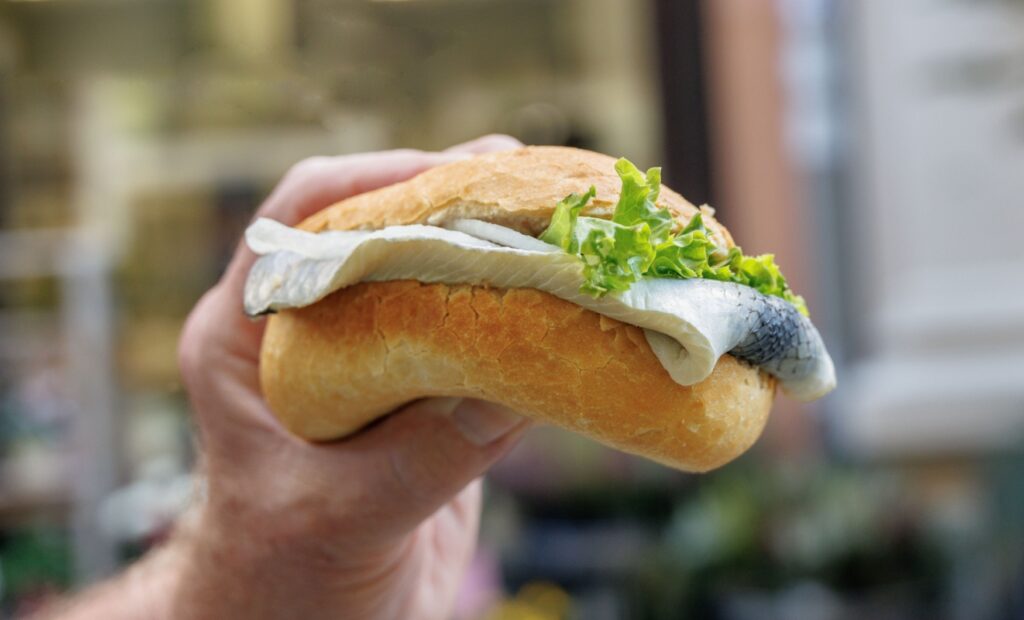
Grünkohl mit Pinkel (Lower Saxony, Bremen)
A hearty winter stew made from kale, potatoes, and a special type of sausage called “Pinkel.” It is particularly popular during traditional kale tours in winter, where you hike through the countryside and enjoy kale with “Pinkel” at your destination.
Where to eat? The “Gasthaus zum Kaiser Friedrich” in Bremen serves an excellent kale stew.
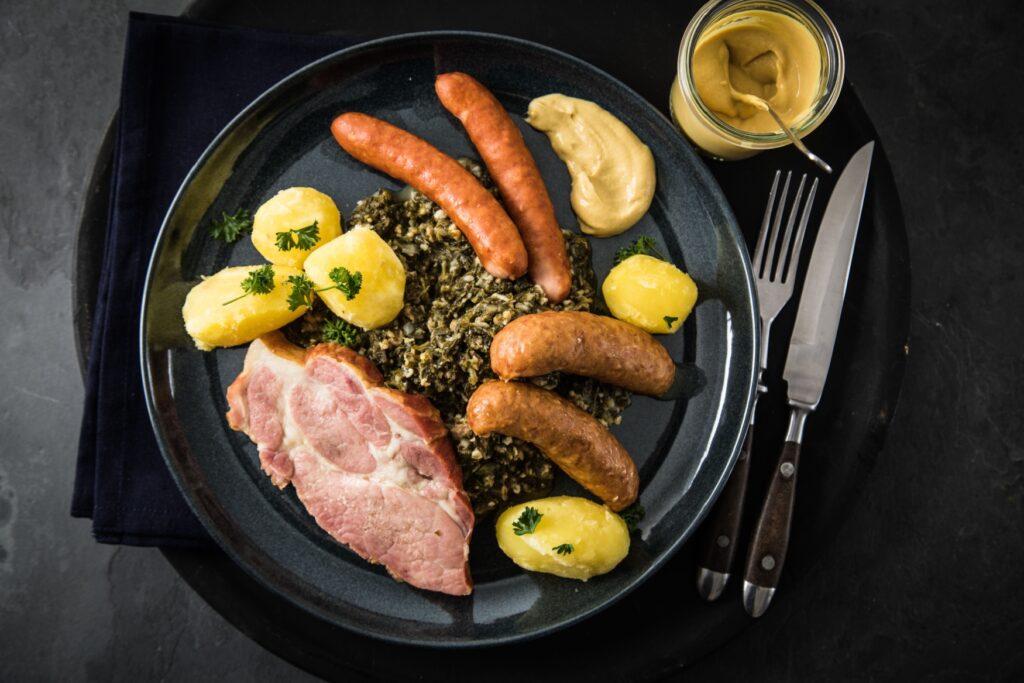
Eastern Germany
Thüringer Rostbratwurst (Thuringia)
The famous, coarsely seasoned bratwurst with caraway and marjoram, traditionally grilled over charcoal. It has a long tradition and tastes best with mustard and fresh bread.
Where to eat? Best at one of the bratwurst stands on Erfurt’s cathedral square or at the “Bratwurstküche” in Weimar.
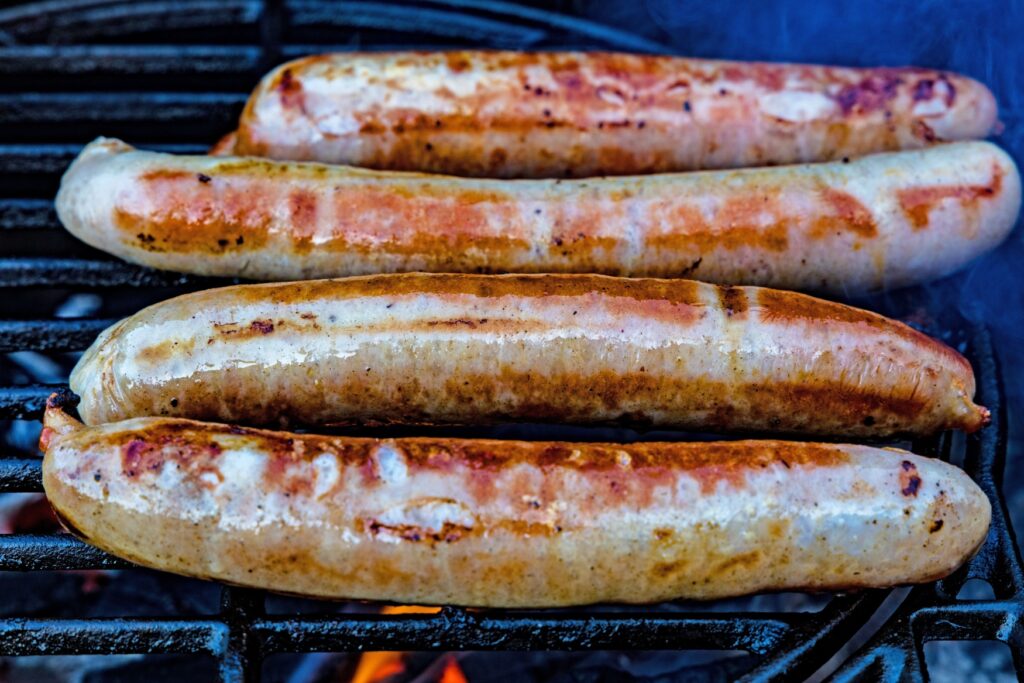
Leipziger Allerlei (Saxony)
A light vegetable german dish with peas, carrots, asparagus, and crayfish – originally invented as protection against tax collectors. They were supposed to think that the Leipzigers, who were actually quite wealthy after the Napoleonic Wars in the 19th century, could only afford vegetables. Today, Leipziger Allerlei is considered a fine specialty.
Where to eat? “Auerbachs Keller” in Leipzig offers a particularly authentic version.
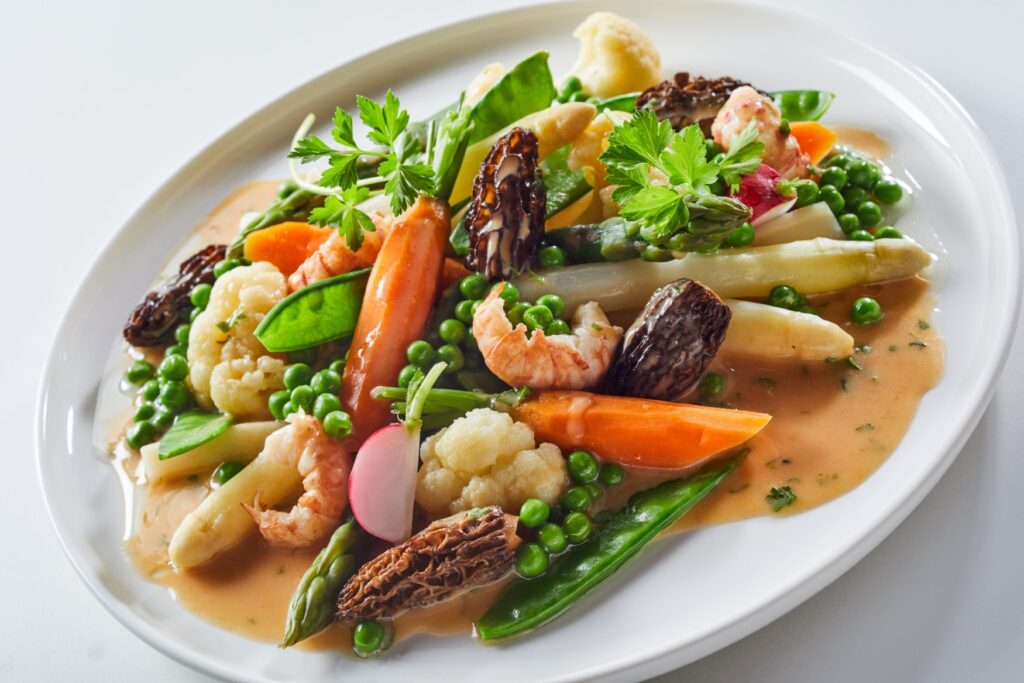
Soljanka (Brandenburg, Saxony-Anhalt, Mecklenburg-Western Pomerania)
A sour and spicy soup with paprika, sausage, or meat that became popular in the GDR. It originally comes from Eastern European cuisine and is still popular in eastern Germany today.
Where to eat? The restaurant “Zur letzten Instanz” in Berlin serves an excellent soljanka.

Western Germany
Halve Hahn (Rhineland)
Not chicken, but a rye roll with butter, medium-aged Gouda, mustard, and onions. A classic in Cologne breweries.
Where to eat? At “Früh am Dom” in Cologne – a brewery serving authentic Rhineland cuisine.
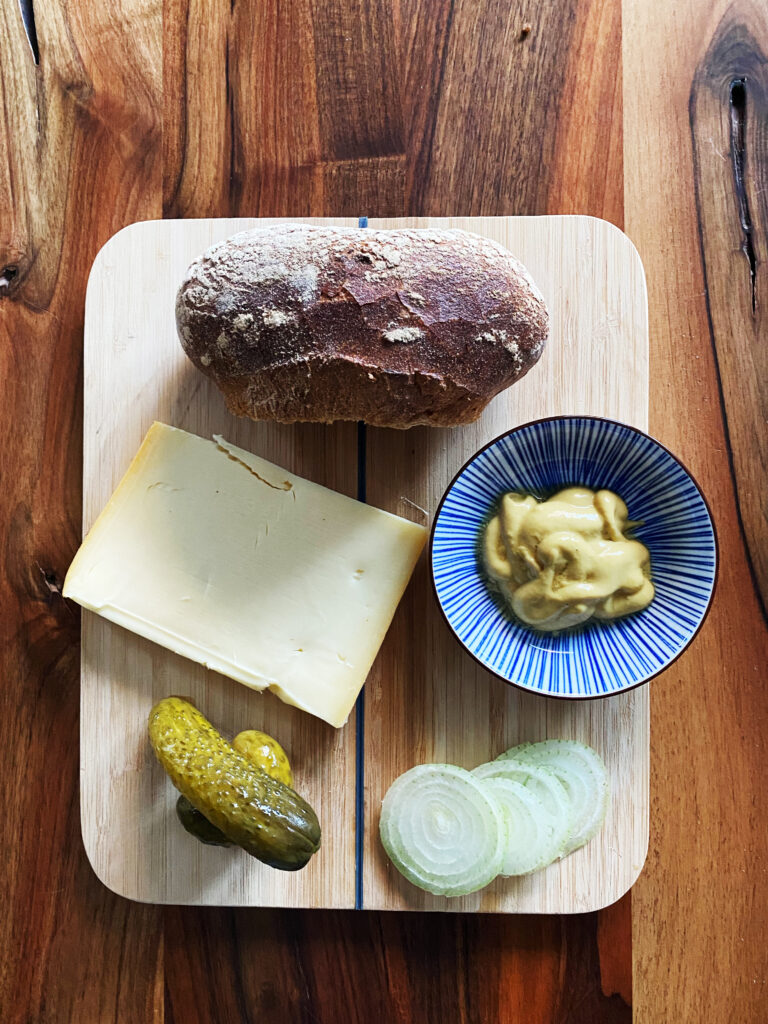
Himmel un Ääd (North Rhine-Westphalia, Rhineland)
A hearty german dish made from mashed potatoes (“earth”) and apples (“sky”) with fried black pudding. The contrast between sweet and savory makes it special.
Where to eat? “Peters Brauhaus” in Cologne serves an excellent version.
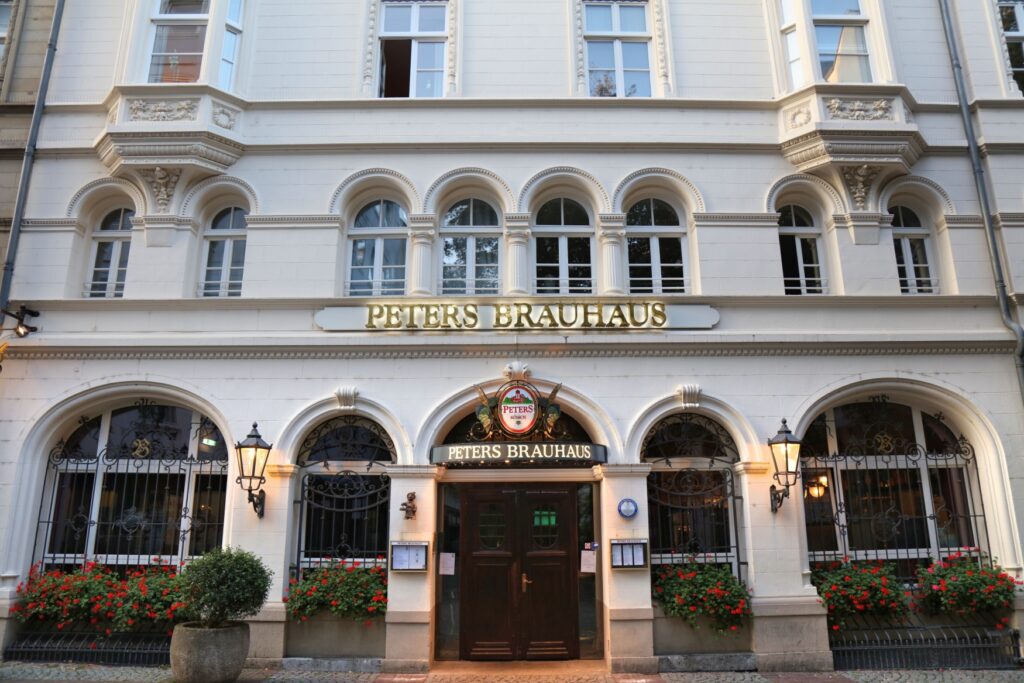
Döppekooche (Eifel, Rhineland-Palatinate)
A hearty potato casserole with bacon, traditionally served on St. Martin’s Day. It used to be known as a “poor man’s food.”
Where to eat? The “Hotel Ruland” in Altenahr offers an excellent interpretation of this classic german dish.
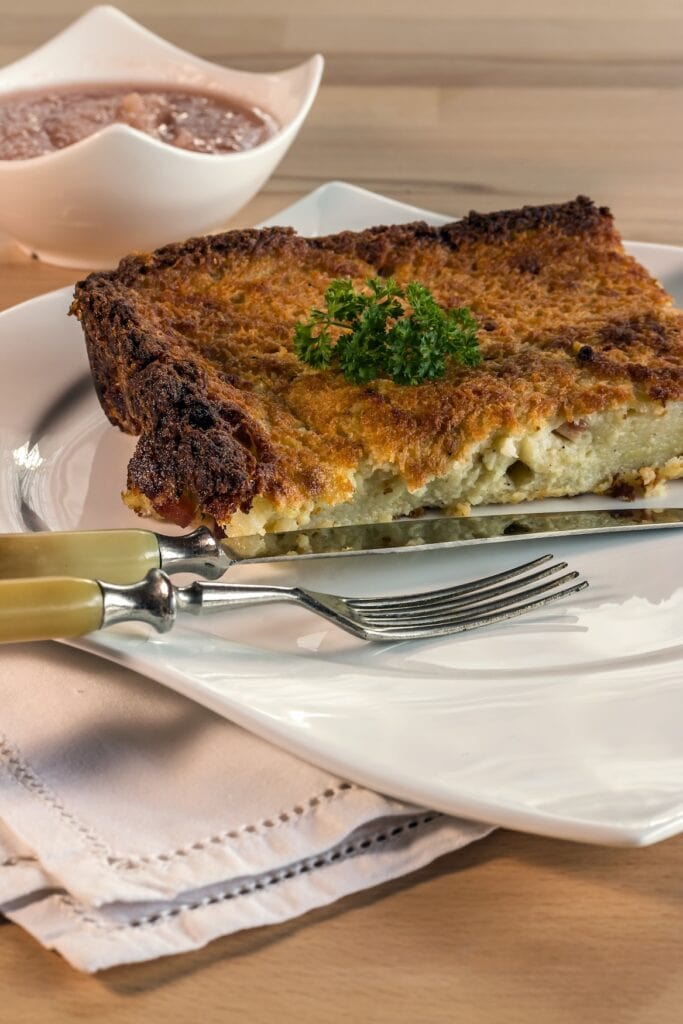
Southern Germany
Spätzle (Baden-Württemberg, Bavaria)
These popular egg noodles are a perfect german side dish for sauces or, as Käsespätzle with fried onions, a main course in their own right.
Where to eat? The “Gasthof zur Sonne” in Stuttgart serves homemade Spätzle made according to a traditional recipe.
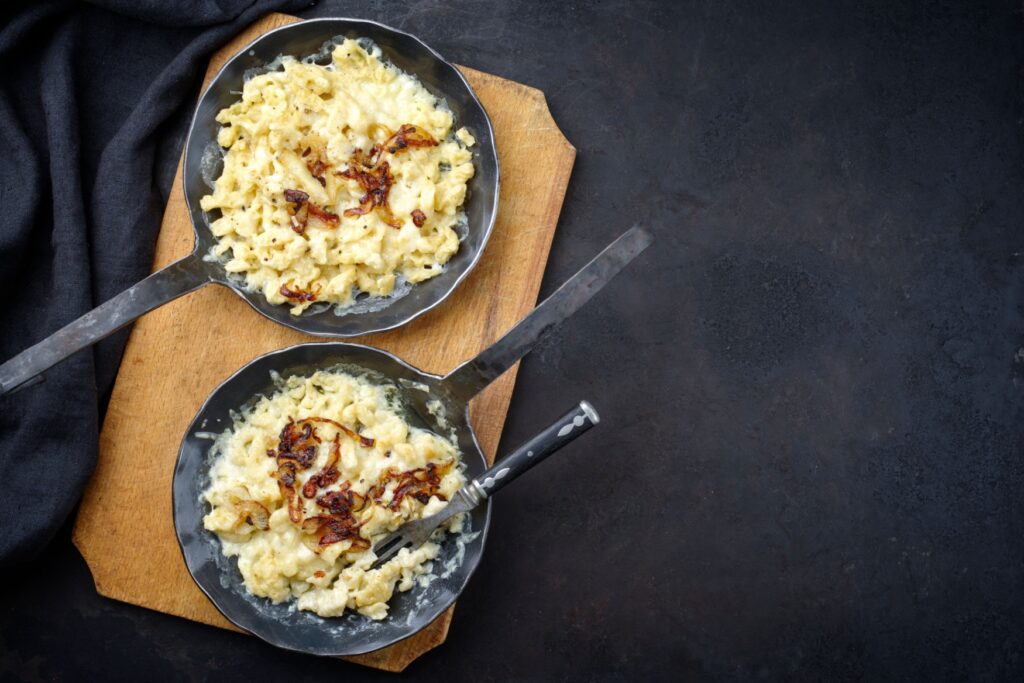
Weißwurst with pretzels (Bavaria)
This Munich specialty is traditionally eaten before noon with sweet mustard and a fresh pretzel.
Where to eat? Head to “Hofbräuhaus” in Munich for the ultimate Weißwurst experience.
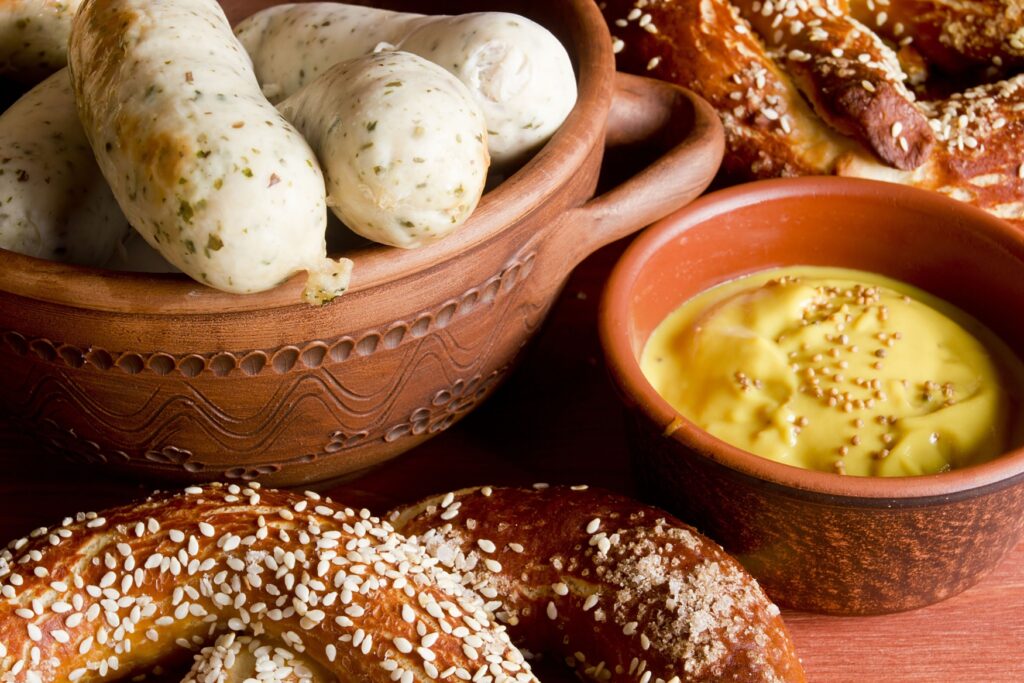
Maultaschen (Swabia)
Swabia’s answer to ravioli: large dumplings filled with meat, spinach, or vegetables. They were supposedly invented to hide meat during Lent.
Where to eat? At the “Weinstube Schellenturm” in Stuttgart.
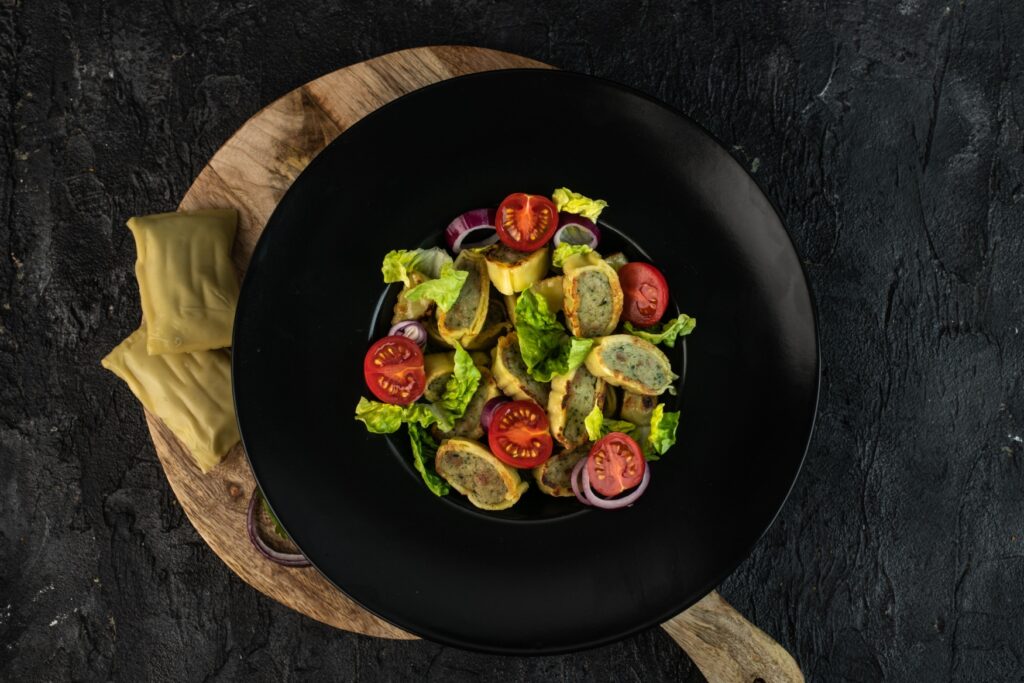
Sweet specialties
Schwarzwälder Kirschtorte (Baden-Württemberg)
A combination of chocolate, cherries, cream, and cherry brandy – one of Germany’s most famous cakes.
Where to eat? The “Meisterkonditorei Kirsch” in Schonach is considered one of the best places to try it.
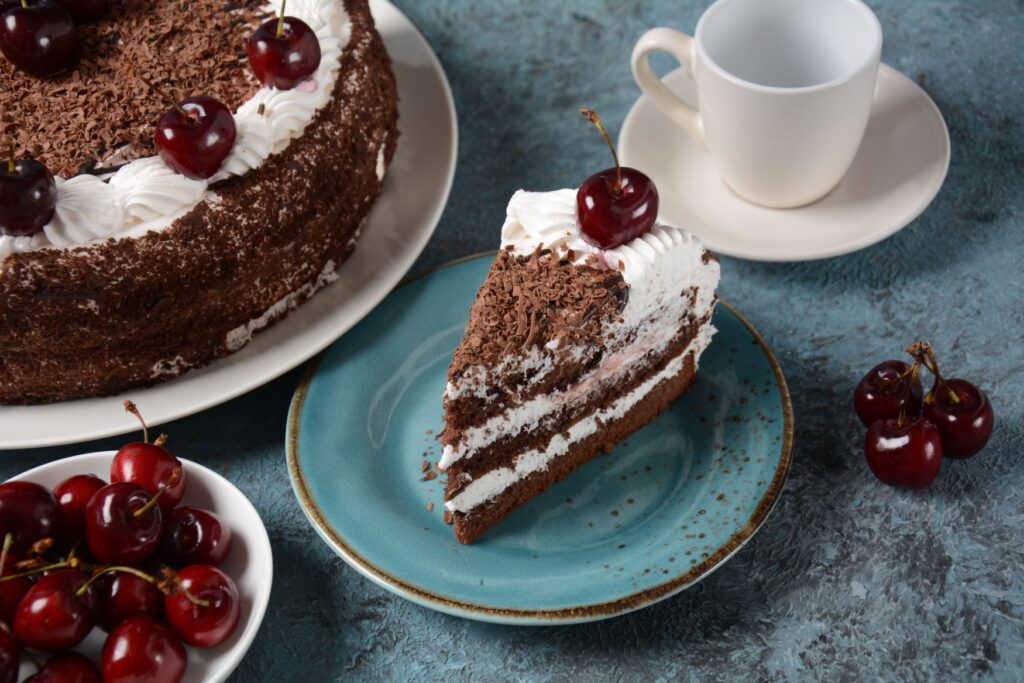
Dresdner Weihnachtsstollen (Saxony)
A heavy yeast cake with almonds, raisins, and powdered sugar – a must-have during the Christmas season.
Where to eat? The famous “Emil Reimann” bakery in Dresden.
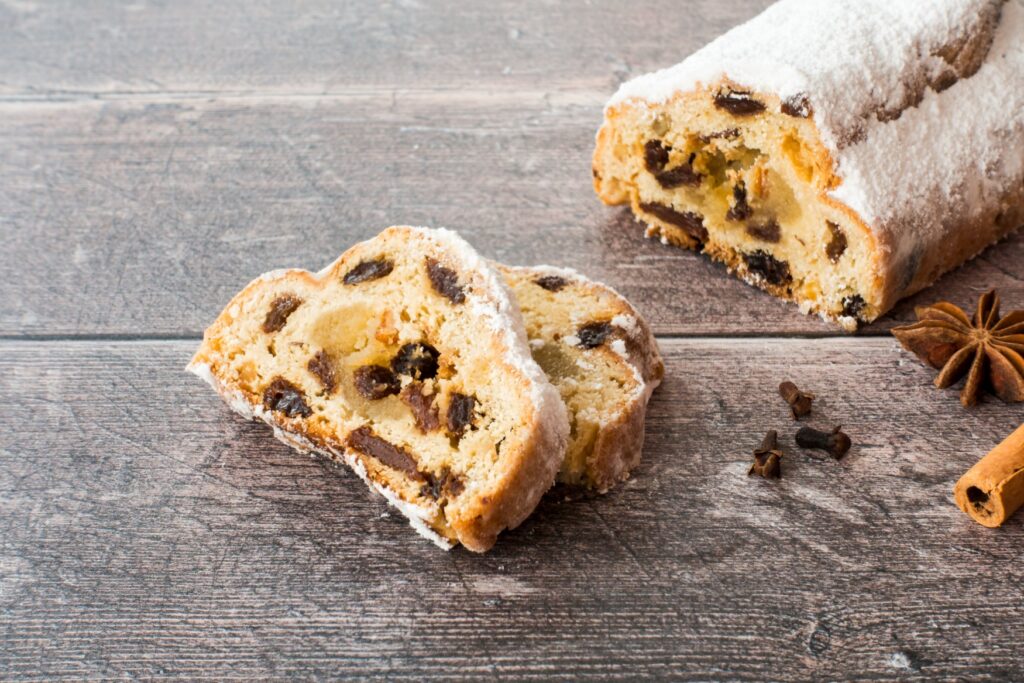
Berliner Pfannkuchen (Berlin, Brandenburg)
These filled doughnuts with jam are particularly popular on New Year’s Eve – sometimes with a mustard filling for fun!
Where to eat? At the “Bäckerei Siebert” in Berlin, the oldest bakery in the city.
